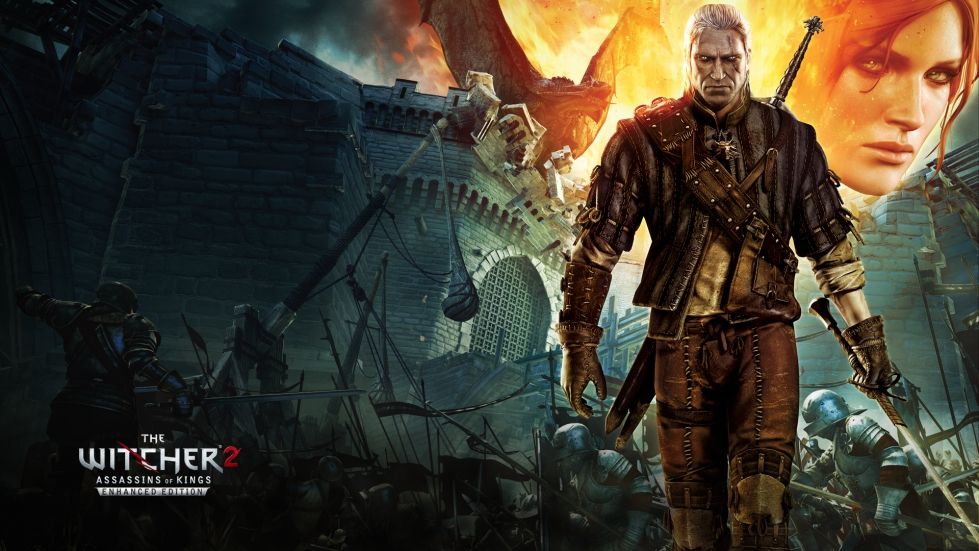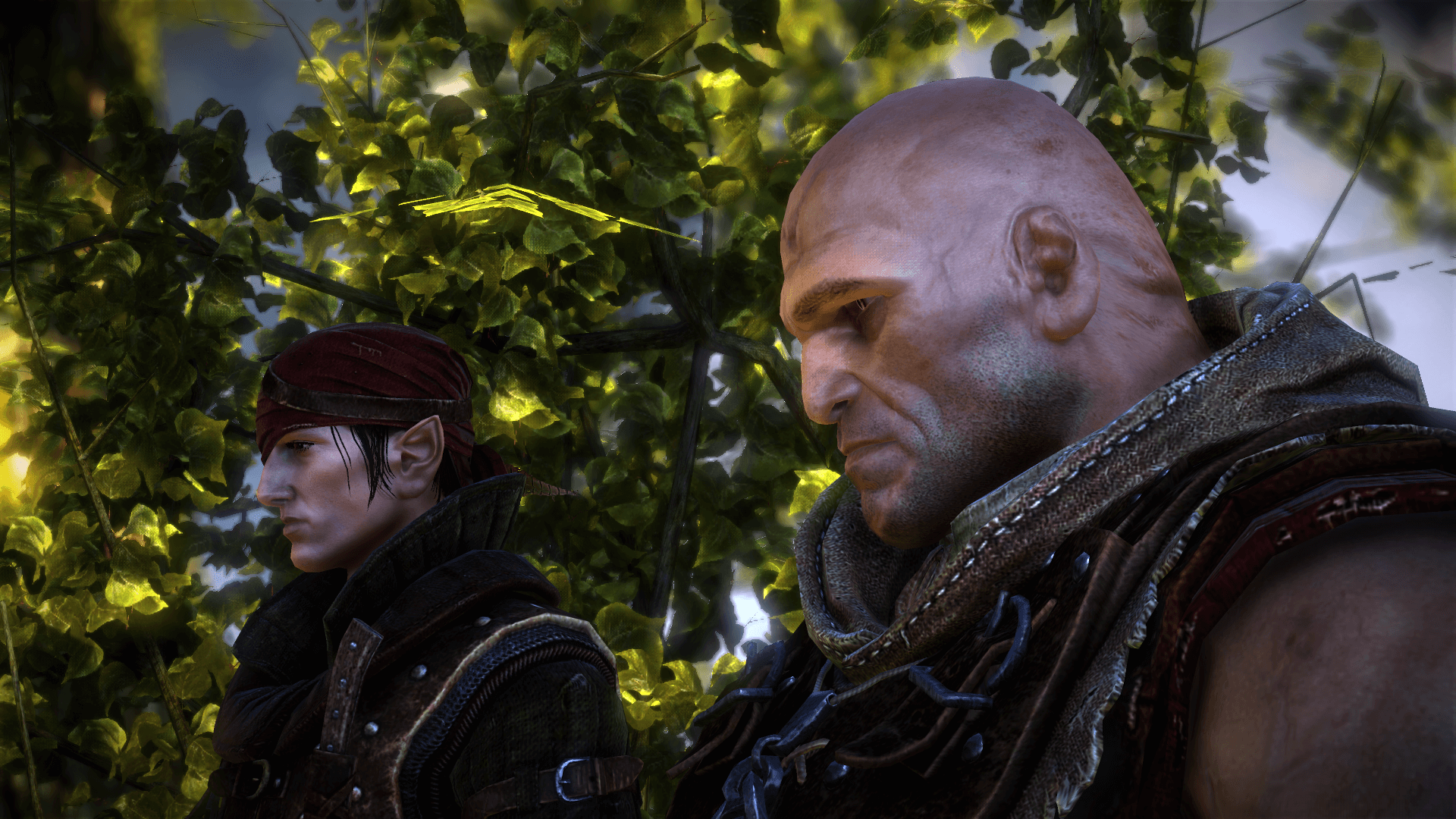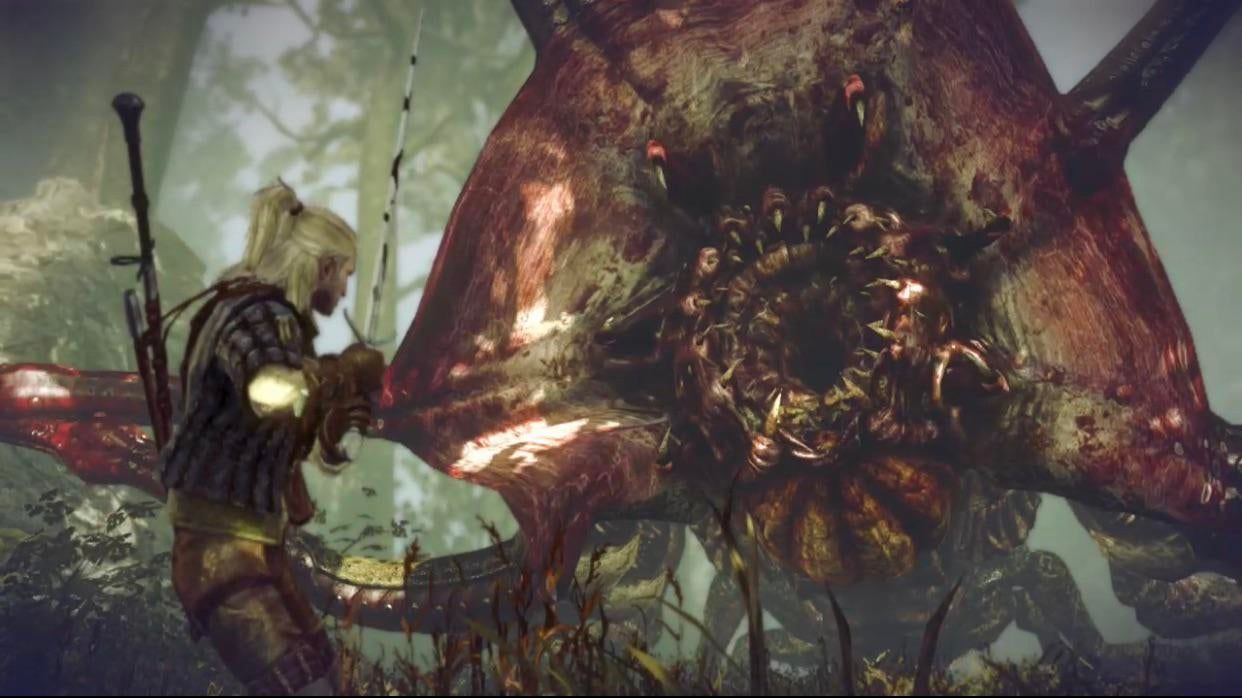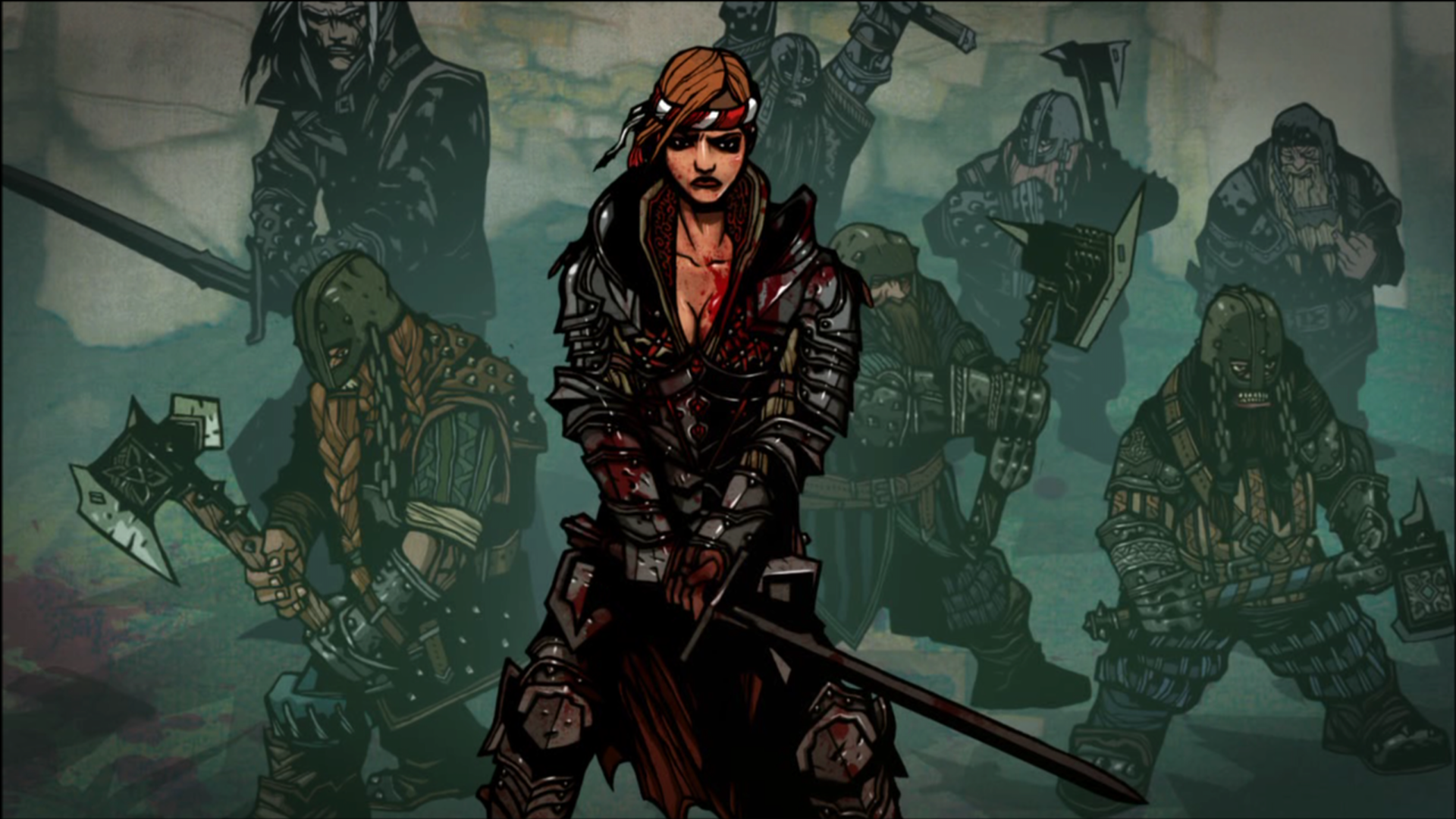Witcher 2: Exploring the neutrality of a Witcher
A Witcher does not take sides.

I had no plans to play the Witcher 2, but I am really glad I did. This again I will give credit to Microsoft for the backward compatibility of the Xbox. I was able to pick up the Xbox 360 game on a deal and start my journey into this prequel story of Witcher 3. I refer to as Witcher 2 as a prequel because I, like many others, ventured into the Witcher world with the third game.
Witcher 3 is an amazing game and after spending hours lost in the world of stories and books, I was glad to get an another extra dose of it. CD Projekt Red are the masters of storytelling and exploring the world they had built was a whole lot of fun. Little did I realize at the time that this game would lay the proper foundation to Witcher 3 leading to a better understanding of the story and the lay of the world (which actually makes sense).
Witcher 2 begins in the dungeon, where Geralt has been captured and being interrogated by Vernon Roche. Through a series of flashbacks, I learned of the assassination of King Foltest, for which Geralt has been blamed. Now the prologue is quite extended and set dominantly during the the siege of La Vallete castle. You make your escape from the dungeon and set out to prove your innocence by giving chase to the killer, another Witcher.

I saw Triss and Geralt and later King Foltest himself, who is preparing to assault the La Vallete's castle. Combat still makes use of swords and signs and it seems every encounter requires a combination of both to get through. There is some lack of proper feedback on a successful attack, but it becomes unnoticeable due to the fast paced nature of the fights. It was fun to make use of Axii to pit enemies against each other, Igni to light 'em up, Quen to shield myself, Yrden for the traps and Aard to blast enemies away (very effective on Harpies I learnt later).
What surprised me in the prologue was the stealth section as you made your escape from the dungeons. I paid dearly for not paying attention to the tutorials as I ended up bungling the stealth. Making a direct and bloody way to the exit, I got reprimanded on the way out. Luckily, my clumsiness did not have any other far reaching consequences. Though in my flashback, I failed to not kill Aryan La Vallete, which was one of the major choices of this game. As a result, there was no one to help lead me out of the dungeon.

After making my escape, I made my way to Flotsam with Triss and Roche following the steps of the king killer. It is there in that small town that the true story starts. We are free to explore the town and discover side quests while making our way through the main story. Ironically, I later found that the fun was yet to begin when I took a break from playing the game. Flotsam was just the beginning.
Around the time my friend told me about the JRPG Dragon Quest XI, which he was playing at the time, I had the sudden feeling to jump back into the game. I picked up where I left off in Flotsam. After saving Dandelion and Zoltan, Geralt has to meet up with the local chief, Loredo. I also discovered side quests and contracts in the game. So far, the Witcher 2 played like a linear game, but now it had a semi-open world filled with opportunities to explore.
Side quests and contracts
In a traditional Witcher fashion, most side quests and contracts were put up on notice boards next to the inn. However, instead of markers showing up and populating the map, I had to explore the world and take care of the objectives. It did create an immersive experience as I set out to find the locations as best as I could. Of course, the map was no help.
The map of Witcher 2 is basically for shit. It takes a long time to make heads or tails of it and in the end, it comes down to your experience and direction of the surroundings to help you navigate. Many a time I would look up walkthroughs to find my objective. This was especially the case when I had to find my way in the mines. I would also blame this partly on today's open world games spoiling it all for us. Instead of a natural discovery through exploration, we have been hand held to our objectives. But still, I would say the game's map is a piece of crap and requires an overhaul at least in the shading department. Glad this wasn't the case with Witcher 3.
One of the quests, which I almost missed coz of my disconnected playthrough, was that of forging a silver sword. Now in the prologue, Geralt loses his silver sword while trying to defend Foltest against a dragon (yes, you heard me right, there is a dragon in the game and it plays a bigger role later on). Thus armed with only a steel sword, the Witcher is defenseless against monsters until he gets a new sword forged. It is nice to see that instead of automatically handing me a silver sword, they actually gave me a quest to get it forged, which involved getting the right materials.
Hunting monsters
Contracts feature in the game as a means to get us to hunt monsters and clear out their nests. The first couple of contracts I got were for Nekkers and Mandregas. Now I had fought a few roaming the nearby forest and thought it would be an easy task. Though, it turns out the first step in their contract is to learn more about the monsters. Learn more about the monsters? How do I learn more?
Turns out, I had to either fight a certain number of the monsters to gain "knowledge" or just read a book about them. Damn, that is some realistic role-playing and I need to get an education. It is quite an interesting mechanic as when I read the books on the monsters, it gave me insights into their weaknesses. I remember a similar mechanic in the Witcher 3, but as it had been years since I started the game and I was so used to being a monster killing machine that I took the knowledge for granted.
Let me tell you that for books that have the knowledge, they were quite pricey and me, being the lowly Witcher that I was, needed to earn my way to buying them. That meant finding other secrets of the world and selling off armor and weapons to rake in the gold, a task I was ready to do as I had to manage my very, very, very limited inventory.
If it wasn't evident so far, I have to say that I have been pampered by today's open world games and Witcher 2 was one of my first forays into old school RPG. Witcher 3 did have similar concerns, but there means of expanding it through using your horse and upgrades. That wasn't the case in Witcher 2 (at least in my playthrough).
Back to the main quest
Hunting monsters and a few side quests here and there did not keep me away from the main story for too long. Unlike the Witcher 3, there are lesser diversions in this game and I found myself pulled into the plot behind the assassin of kings. Letho, the King slayer seems to have made his way to Flotsam and is being helped by the Aen Sidhe, the elves in the forest and their leader, Iorveth.

Before speaking to Loredo in his mansion, we have an option to sneak in his backyard and eavesdrop on his meeting with the sorceress, Sile de Tanservile. This involved using stealth to sneak in. It was all about getting the timing right and keeping to the shadows. It was, however, a bit annoying when I missed the positioning behind a guard or the prompt to knock enemies not appearing, which got me spotted one too many times. Took me a few tries to get it right. You can easily get caught in this section and miss the opportunity to learn more about the sorceress' intentions.
We later also find Sile in conversation with Phillipa Eilhart. Now since I had played Witcher 3, I knew that Phillipa had a role to play in the assassinations and loses her eyes as a result of her meddlings. So, it did seem like something fishy was in play. But at this point in the game, she seems to be portrayed as a neutral character.
One of the main boss fights of the first chapter is the Kayran. This huge tentacled monster is right out of the pages of a last gen boss fight, including the bulging red weak spots that we have to hack away at. Yrden traps help to trap the flailing tentacles and ease the process of hacking it away. What got me confused was the end of the fight where I got electrocuted when trying to hack away at the mouth of the Kayran, when I should have been making my way to the top. Reminded me of that dragon in Archdragon peak in Dark Souls 3, who required a drop from above to finish it off in a single shot. Of course, in this case, that applied to just the finishing move.

The Kayran serves as a challenging boss fight and after it, we proceed to follow in the footsteps of Letho, learning that he plans to betray Iorveth. We also find out about the Rose of Remembrance. Now in the opening of the Witcher game series, Geralt has lost his memory of the time before. It seems to serve as a semi-blank canvas for the games. However, through the Witcher 2, we see flashes of his memory as it returns to him. By the end of this game, his memory is fully restored, but not with the use of the rose (the rose served another purpose, we find out later).
We get Iorveth's help, albeit after a mini boss fight with an Arachas and proceed to unveil Letho's treachery. A duel with Letho ensues in which he defeats Geralt but spares him as Geralt had previously saved Letho once, a fact that Geralt had forgotten since he lost his memory.
Letho kidnaps Triss and forces her to teleport them to Aedirn, leaving the Witcher to give chase. This seems very reminiscent of Witcher 3 and Geralt following the footsteps of Yenefer. Seems the Witcher spends quite a bit of his time chasing his girlfriends.
Finally, at the end of the chapter we are given the choice of Iorveth or Roche. Iorveth is a revolutionary/terrorist, who is fighting for the rights of the elves, a persecuted race, to get a place in the world dominated by humans. I found myself leaning to his agenda over Roche, who was merely working for his country and in his prejudice was ready to take out the elf leader.
A Witcher does not take sides, but in this case, he had to choose one. I chose Iorveth.
Chapter 2
Chapter 2 opens dramatically with a war council meeting between Saskia the Dragon Slayer, leader of a rebel force working to establish an independent nation of elves, dwarves and other persecuted race of people, and King Henselt, who was marching his army to take over Upper Aedirn. This meeting ends with a curse unleashed upon the battlefield dividing the two sides by a fog of war filled with the undead. What's interesting is that we will end up on either side of the battle based on our choice to side with Iorveth or Roche. Since I chose Iorveth, I ended up on Saskia's side.
After making our way through the fog and being introduced to the undead warriors rising from their grave across the battlefield, we made our way to Saskia's camp in Upper Aedirn with the help of Phillipa Earhart. However, soon after, Saskia gets poisoned and it ends up being our quest to find her a cure.
It is interesting to note that the second chapter spawns multiple quests that involve seeking magical items to help with the cure, breaking the blood curse on the battlefield, and finding the identity of the poisoner. This section feels like a book with its multiple storylines and while I got the items together, I was further able to explore Aedirn, the surrounding areas, even going so far as infiltrating King Henselt's camp on the other side of the fog.
One of the most annoying sections in the game comes up next in the mines. The map gives no help and we end up in a really dark place trying to find our way. Cat potion helps, but the twisting tunnels serve to further confuse us. The mines require patience to navigate and diligence to explore every corner.
The hunt for the poisoner is quite an interesting mystery. We have to unravel the clues, weaving among the local folk, who demand the head of Prince Stennis, believing he is responsible it. At first, I believed that Prince Stennis was innocent as he looked to support Saskia's cause. But soon I discovered that he had plotted with the priest to have Saskia poisoned. Insecure in his position, he made a move against the more popular Saskia. We are given the choice to put Stennis to trial or allow the mob to lynch him. Normally, I would choose to have put him to trial for justice, but once I found out that he would still be acquitted, I chose to give him to the mob. This, of course, in true Witcher fashion had consequences to destabilize the leadership as without the prince there was no one in the position of power to bring order. Trust CDPR to make important political commentary through their characters.
Sneaking into the enemies camp to rescue Triss as we find she is on this side of the fog is another interesting section of the game with us being give multiple choices for approach including bribing the pleasure house owner for a way in or making through the secret roundabout route. Once we make our way through, we get a sneak peak at the other side, where we would have spent a dominant part of our time had we chosen Roche's path. This section also features the use of Axii to put the people into a trance. Finally, when we do get to Triss we are too late as she is whisked away to Loc Muinne, an ancient elven city, by Shilard, a Nilfgaardian.
After I was able to cure Saskia and lift the curse on the battlefield, the battle with King Henselt's forces resume. One of the sections with waves of enemies attacking the walls of the Pontarr Valley that did not age well coz of the combat. One of the biggest revelations comes when we find that Saskia is a dragon and not just any dragon, but the one who attacked us in the Prologue and she is the daughter of the Golden Dragon. For those, who haven't watched the series or read the books, the Golden Dragon is one of the last remaining dragons, who gets the Witcher's help in protecting his nest. I am pretty sure we even get to see Saskia as an egg.
The battle to save the Pontarr Valley is a success with Saskia declaring herself as queen and plans being made to attend the Summit in Loc Muinne. Saskia seems to be acting odd and looks to be under the spell of Phillipa. We uncover the truth after Phillipa portals to Loc Muinne with Saskia. All parts lead to the old elven city and we have to make our way to it with Iorveth.
Chapter 3
The ancient city of Loc Muinne, once ruled by elves but now in ruin, reminded me of Elantris. Here was a city that had fell to ruins and yet visages of its former glory were evident everywhere. Parts of the main city still had life with the envoys from the different kingdoms gathering together for the Summit and yet the edges of the city were dominated by gargoyles, yet another shadow to the city. By this time, we learn that Phillipa is kept in the dungeons.
With this chapter leading to the conclusion, we are faced by many important choices that would shape the future. But apart from the main story, there is an interesting side quest, which can be undertaken with Cynthia, who was formerly Phillipa's student. She and her crew are looking to get into Dearhenna's laboratory and find his secrets. It is quite an interesting quests with multiple riddles (most of which I used the internet's help to solve) and a final encounter with Golem, whom we have to shut down down using philosophy.
Getting back on track, I finally was able to find Phillipa blinded by King Radovid for her alleged involvement in the assassination of kings. We also learn of Triss' location. At this point, we are given a choice to save Triss by making our way to her cell or save Saskia by helping Phillipa and breaking her hold over the queen. I leaned towards helping Saskia and rescued Phillipa. She leads Geralt and Iorveth to the chest with the dagger that will help lift Saskia's curse, but it ends up being a trap and she escapes away from us. Defeating the Elemental guarding the chest, I was able to get the dagger and we hurried to the Summit to administer the cure to Saskia.
Just as we enter the Summit at the center of Loc Muinne, Sile and the Lodge aims to increase the power of the mages, when she gets accused of the assassination plot. She triggers the transformation of Saskia to a dragon to wreak havoc and makes her escape in the chaos. The dragon is the final boss battle of Witcher 2 and in the process of heading to defeat her, we see Sile de Tanservile trying to teleport away from the mess. We get a choice to save her by fixing the tampered teleportation device and I did save her. The fight with the dragon is another that feels out of the books of last gen and quite frustrating at times. Finally, saving Saskia by pushing the dagger into her chest and breaking the spell, we have now rescued a queen of a now newly independent Pontarr Valley, a promised land for outcasts.

Saving Saskia did not come cheap as we did not save Triss and did not get to kill Shilard, who then spear heads a brutal witch hunt against all mages across the kingdom. The mages, who were once honored and enjoyed positions of advisors by kings, were now a persecuted people, all because of the Lodge of Sorceresses greed for power.
Luckily for us, while we were busy saving Saskia, Letho did the job of saving Triss and we have one final encounter with him. It is Letho, who fills in the blanks of Geralt's memory. He tells him of the kidnapping of Yennefer, his pursuit of the Wild Hunt, of saving Letho and getting his help in the journey and finally, trading his life to the Hunt in exchange for Yennefer's. We also learn that the origins of the Wild Hunt. There are not mythical creatures, but elves from a parallel realm, who made their way through to the Witcher's world during the Conjunction of Spheres.
Now Letho is the assassin of kings and we learn that it was the plot of the Nilfgaardians, who had hired him to do the job. Letho had made use of Sile and the Lodge to further his plans, cutting his losses and changing sides whenever it served him, but making sure to leave a trail leading to the Lodge. Being the pawn in a bigger war yet to come, I chose to spare Letho (a decision I had taken in Witcher 3 as well).
In the end credits, the politics of Witcher 3 and the lay of the kingdoms in put into perspective. Temeria, after the death of King Foltest, is split between King Radovid and King Henselt and the Nilfgaardians arch up to the kingdoms, which they have now destabalised by orchestrating the assassinations.

Would you change the choices you made? The Witcher 2 had posted wide diverging paths in its narrative and I still wonder if I made the right choices. Though in the end, I am glad that Saskia got the independent kingdom she deserved.
Triss and Geralt
In the Witcher 3, I chose to romance Yennefer as for me, it was the natural extension of the relationship in the books. There destinies were ted by a wish, but it seemed to go beyond. I remember though at the time, Hollie from Playstation Access stating that she was on the side of Geralt ending up with Triss as it was more in line with the games.
A the start of Witcher 2, Geralt is with Triss in Foltest's camp. This seems to draw a parallel to WItcher 3 with Geralt and Yennefer in Kaer Morhen. Throughout the second game, Triss stands with Geralt, expressing her desire to get away from it all from the start of the game. The assassination of the king throws their plans into the wind. Yet she stands by Geralt when he accused of the crime and even helps him in his journey. At the end of this game, Triss has been through a lot and now I understand that it was Geralt and Triss that were meant to be together. There was no destiny tying them or any manipulation from either of them (Yennefer has been prone to using Geralt a number of times). Geralt and Triss are truly meant to be together.
Conclusion
Witcher 2 is truly a satisfying story and a must play for Witcher fans. Not only do your choices matter in the outcome of the game and the next, but this game gives a better understanding of the politics of the kingdoms in Witcher 3. As with every choice we make, we have to contemplate the lesser evil as each of the choices have far reaching impacts. Further, I was better informed the choices you have to make in Witcher 3 in regards to the previous game in Nilfgaard.
It has been years since I made those choices in Witcher 3 with little understanding and more help from Reddit. But now I know why I need to choose between Iorveth and Roche, and if sparing Letho is the right decision and much more.
Politics, choices and consequences and a widely branching narrative, Witcher 2 does it all so well. With it's more linear, semi-open world, the game delivers an amazing experience. I can't wait to get more of the Witcher world after finishing the game. Maybe I should replay Witcher 3 or read the books.